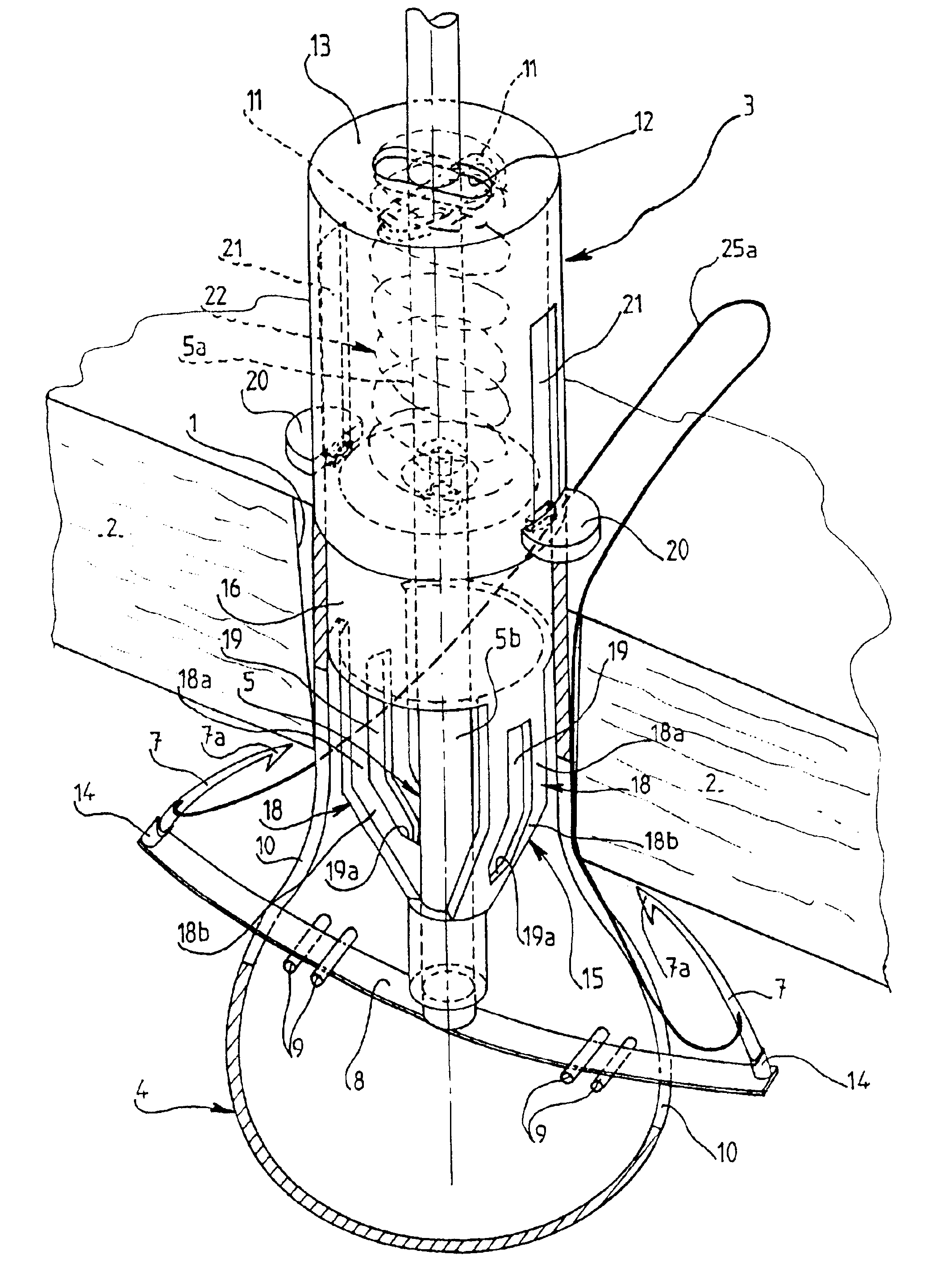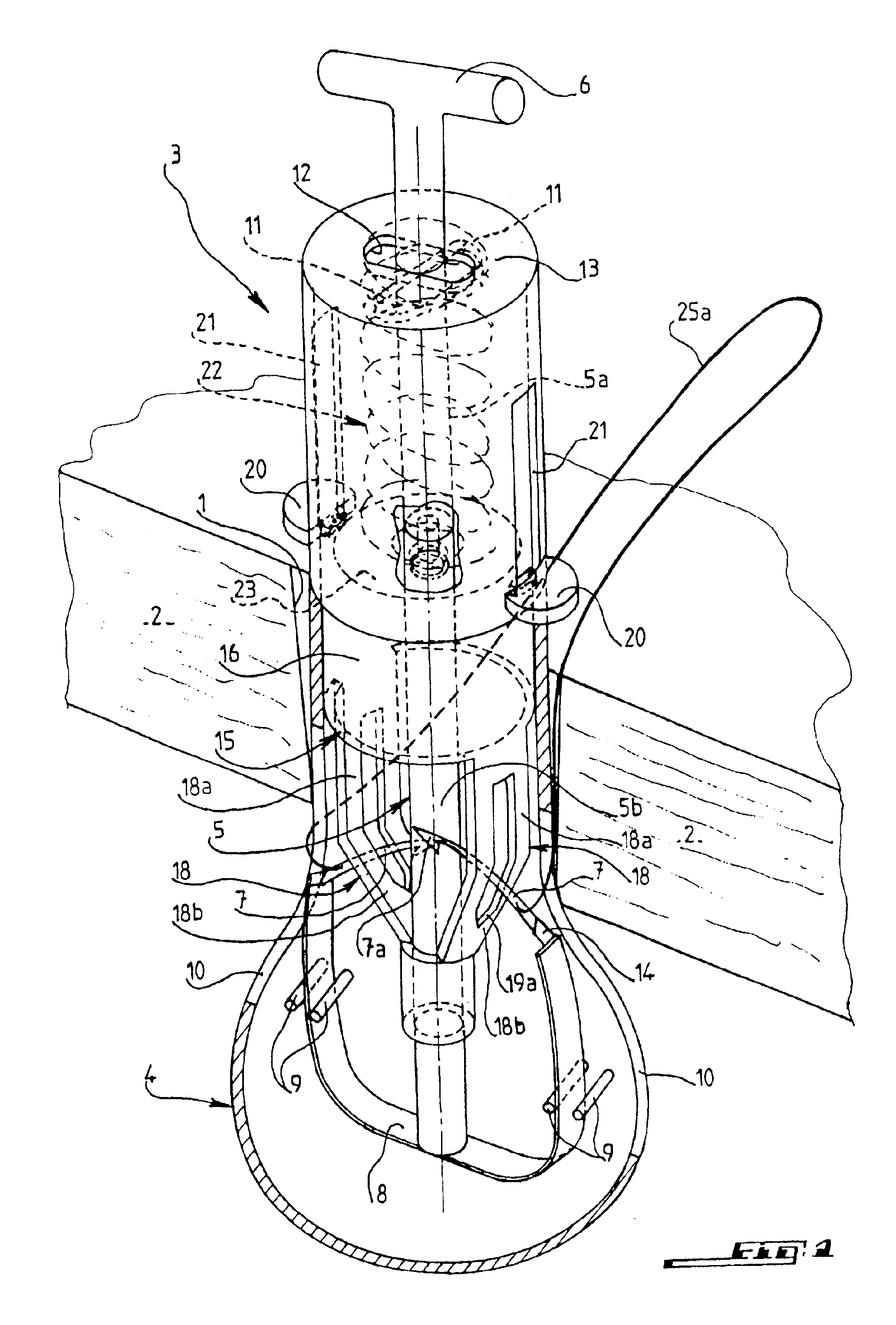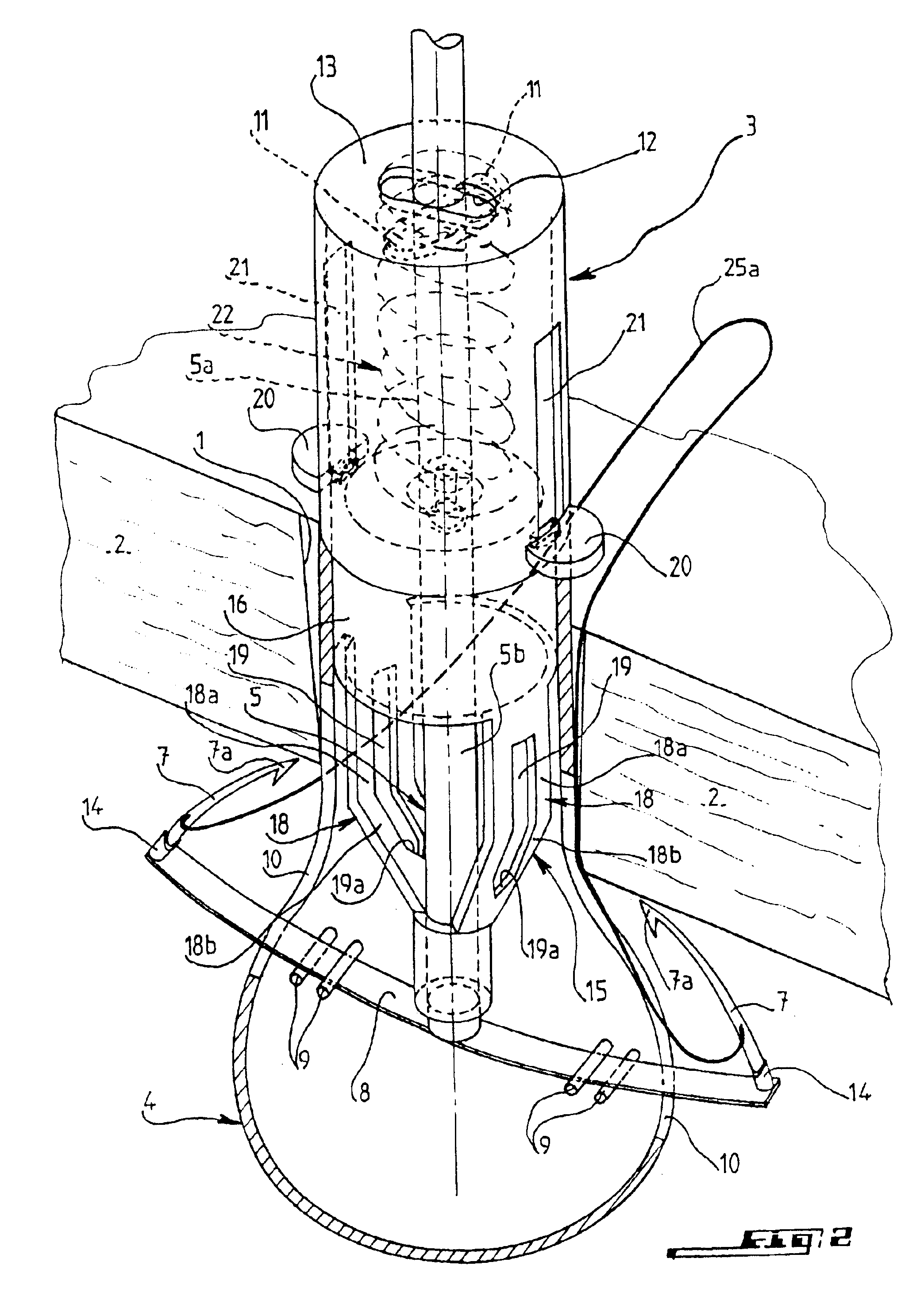Instrument for closing, by subcutaneous suturing, an orifice made in the abdominal wall of a patient
a technology for abdominal wall and orifice, which is applied in the field of instruments for closing, by subcutaneous suturing, an orifice made in the abdominal wall of a patient, which can solve the problems of reducing the efficiency of surgery, and reducing the risk of causing intestinal occlusion or other digestive complications. , to achieve the effect of efficient closing
- Summary
- Abstract
- Description
- Claims
- Application Information
AI Technical Summary
Benefits of technology
Problems solved by technology
Method used
Image
Examples
first embodiment
[0053]FIGS. 9 to 11 illustrate another embodiment of the support member for needles 7, for use as an alternative to that constituted by flexible strip 8 of the
second embodiment
[0054]According to this second embodiment, the support member is constituted by two arms 26 mounted pivotally on a common central pin 27 integral with the body of the cannula in lower part 4 thereof and extending perpendicular to the longitudinal central plane of the cannula. Pin 27 can be fixed by its ends, which are force-fitted respectively in two opposite coaxial holes drilled in the lateral wall of end part 4 of cannula 3, and the two arms 26 are mounted pivotally on pin 27 in the manner of a swinging hinge 28.
[0055]The two arms 26 are provided with the two bases 14, which are integral with their opposite ends and in which the two needles 7 are movably mounted. To permit the two bases 14 to be situated in two planes which are spaced apart and parallel to the longitudinal central plane of cannula 3, the two arms 26, as seen from above, have an elongated S-shaped configuration, whose incurvate branches are situated on both sides of pin 27, the two bases being situated on a diagon...
PUM
 Login to View More
Login to View More Abstract
Description
Claims
Application Information
 Login to View More
Login to View More - R&D
- Intellectual Property
- Life Sciences
- Materials
- Tech Scout
- Unparalleled Data Quality
- Higher Quality Content
- 60% Fewer Hallucinations
Browse by: Latest US Patents, China's latest patents, Technical Efficacy Thesaurus, Application Domain, Technology Topic, Popular Technical Reports.
© 2025 PatSnap. All rights reserved.Legal|Privacy policy|Modern Slavery Act Transparency Statement|Sitemap|About US| Contact US: help@patsnap.com



